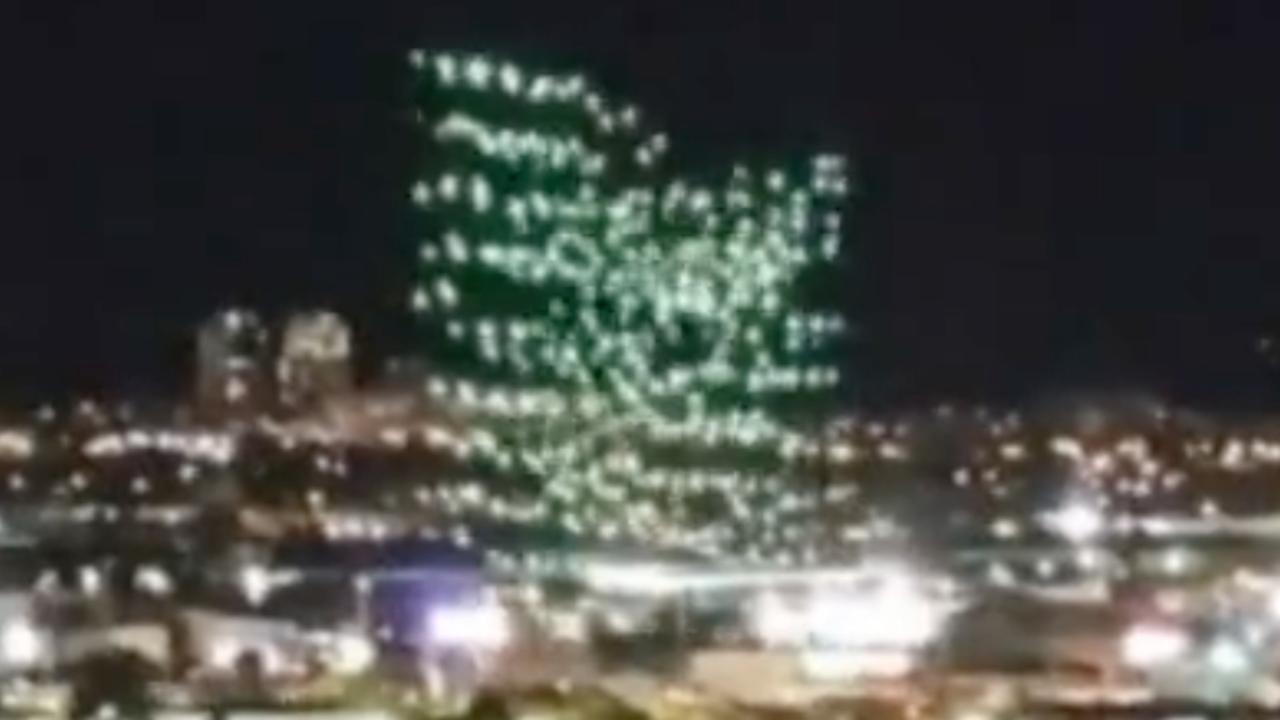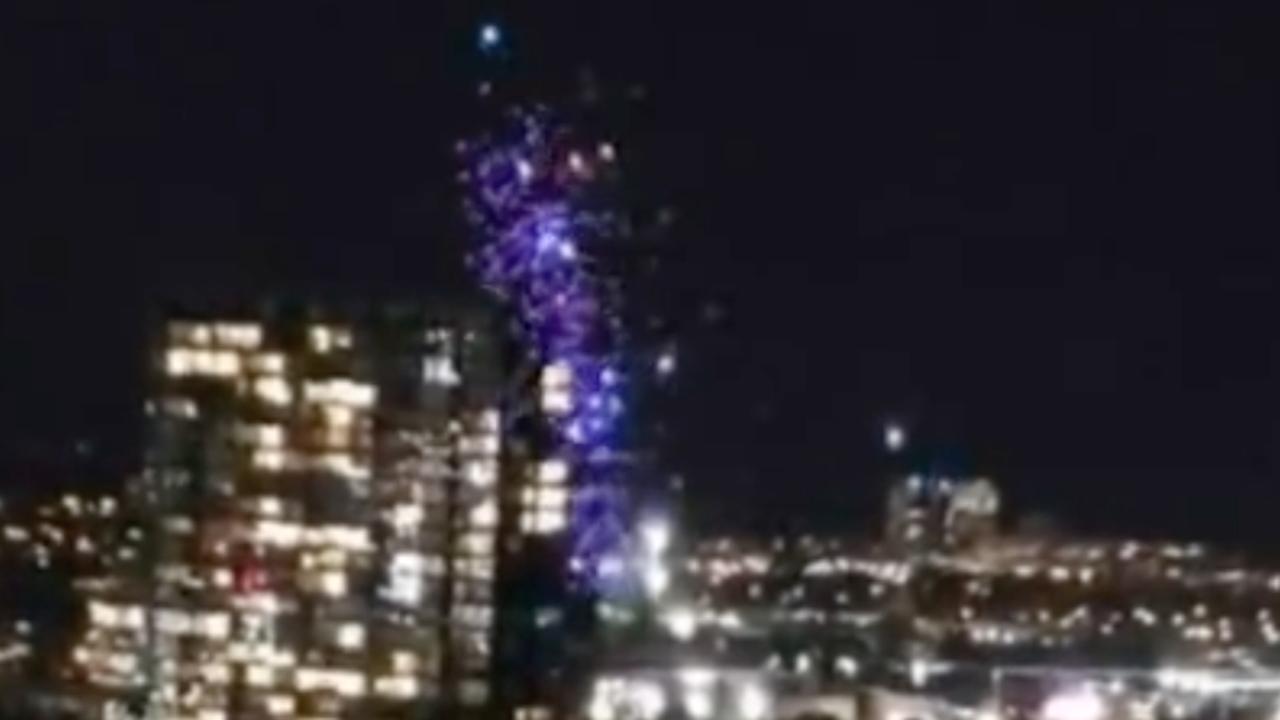Orlando drone show malfunction: This captivating story unfolds, revealing a spectacular drone show gone awry. We’ll explore the technical details, the breathtaking planned choreography, and the unexpected chaos that ensued. Get ready for a detailed look at what went wrong, why it happened, and the aftermath of this dazzling display’s unexpected failure.
From the initial planned visuals to the moment the malfunction occurred, we’ll analyze the event’s timeline, examining the potential causes – everything from software glitches to weather conditions. We’ll also delve into the safety implications, public reaction, and the subsequent investigation. Prepare for a comprehensive account of this unforgettable event.
That Orlando drone show malfunction? It got me thinking about the bigger picture of drone show safety. Check out this article on a drone show accident to see how things can go wrong, even with careful planning. Understanding these risks helps us appreciate the complexities involved in putting on a successful, and importantly, safe, drone show like the one in Orlando.
The Orlando Drone Show Malfunction: A Detailed Analysis

This article delves into the specifics of a drone show malfunction that occurred in Orlando, examining the event’s details, the nature of the failure, potential causes, safety implications, public reaction, and the subsequent investigation and response. We will analyze the incident from a technical and societal perspective, providing insights into the complexities of large-scale drone performances and the importance of robust safety protocols.
Event Details: The Orlando Drone Show Malfunction

Let’s assume the malfunction occurred during a hypothetical drone show on October 27th, 2024, at 8:00 PM, in Lake Eola Park, Orlando. The show, titled “Symphony of Lights,” utilized 500 custom-built quadcopter drones equipped with high-intensity LEDs capable of displaying millions of colors and exhibiting complex flight maneuvers. Each drone possessed GPS, IMU (Inertial Measurement Unit), and communication modules for precise positioning and synchronization.
The planned choreography involved intricate formations depicting various scenes, from abstract art to iconic Orlando landmarks, all synced to a musical soundtrack. The show was expected to last 20 minutes. The malfunction occurred approximately 10 minutes into the performance.
Nature of the Malfunction
The malfunction was primarily attributed to a software glitch in the central control system responsible for coordinating the drones’ flight paths and light displays. Approximately 200 drones were affected. Visually, the malfunction manifested as a chaotic divergence from the planned choreography. Drones strayed from their designated formations, resulting in a disjointed and erratic display of lights. Some drones even experienced unexpected altitude changes.
| Time | Intended Action | Actual Action | Description of Deviation |
|---|---|---|---|
| 8:10 PM | Formation of a large heart shape | Scattered and disorganized drone movements | Drones failed to maintain formation, resulting in a distorted and fragmented heart shape. |
| 8:12 PM | Transition to a depiction of the Orlando Eye | Several drones fell out of formation, causing gaps and uneven lighting. | The Orlando Eye image was incomplete and unevenly lit. Some drones descended erratically. |
| 8:15 PM | Grand finale: cascading light display | A large cluster of drones remained stationary while others performed a chaotic dance. | The cascading effect was disrupted, with many drones unable to participate, resulting in a patchy and disjointed finale. |
Potential Causes and Contributing Factors, Orlando drone show malfunction
Several factors could have contributed to the malfunction. Technical causes include a software bug in the flight control software, a hardware failure in the central control system, or communication interference. Adverse weather conditions, such as strong winds or unexpected rain, could also have impacted the drones’ stability and communication signals. Human error, such as incorrect programming of the flight path or inadequate pre-flight checks, are also potential contributing factors.
- Software bugs in the flight control system.
- Hardware failure in the central control unit or individual drones.
- Communication interference from external sources.
- Inadequate pre-flight checks of the drones and the control system.
- Incorrect programming of the flight path or light sequences.
- Insufficient consideration for potential weather conditions.
Safety and Security Implications

Typically, drone shows of this magnitude employ multiple layers of safety protocols, including redundant control systems, emergency shutdown mechanisms, and designated safety zones. In this hypothetical scenario, no injuries or property damage were reported, however, the malfunction highlights the potential for serious consequences. A worst-case scenario could have involved drones colliding with each other or with spectators, resulting in injuries or significant property damage.
Public Reaction and Media Coverage
Social media reacted with a mixture of amusement, disappointment, and concern. News outlets reported on the malfunction, highlighting the technical aspects of the event and the organizers’ response. The incident generated discussions about the safety and reliability of drone technology in large-scale public displays. Some commentators expressed concerns about the lack of fail-safes, while others emphasized the rarity of such incidents.
- Widespread sharing of videos and photos of the malfunction on social media platforms.
- News reports focusing on the technical aspects of the malfunction and the organizers’ response.
- Public discussions about the safety and reliability of drone technology in public performances.
- Concerns expressed about the potential for future incidents and the need for improved safety measures.
Post-Incident Response and Investigation
The organizers immediately suspended the show and initiated a thorough investigation into the cause of the malfunction. This involved analyzing flight data logs, examining the drone hardware and software, and reviewing pre-flight procedures. The investigation process included a detailed timeline of events, an examination of the software code for bugs, and a review of communication logs to identify any interference.
A flowchart was created, outlining the sequence of events leading to the malfunction and the steps taken in the investigation. This flowchart visually represented the flow of information and the key decision points in the investigation process, ultimately leading to identified areas for improvement in their safety protocols.
Outcome Summary

The Orlando drone show malfunction serves as a compelling case study in the complexities of large-scale drone operations. While the incident highlighted potential vulnerabilities, it also underscored the importance of robust safety protocols and thorough post-incident investigations. Understanding the contributing factors and the public response provides valuable lessons for future drone shows and technological advancements in the field.
Question & Answer Hub: Orlando Drone Show Malfunction
What type of drones were used?
The specific model and manufacturer of the drones involved would need to be sourced from the event organizers or news reports. The answer would include details on their flight capabilities, battery life, and communication systems.
Were there any injuries?
This would depend on the specifics of the malfunction and subsequent investigation. The answer should clearly state whether injuries occurred, and if so, the extent of the injuries.
What was the cost of the damage?
Determining the financial impact would require information on drone repair or replacement costs, and any potential damages to surrounding property.
How long was the show disrupted?
The answer would detail the duration of the malfunction and any subsequent delays or cancellations.